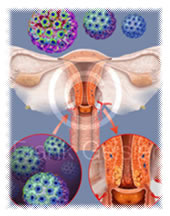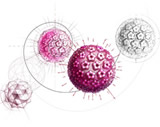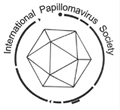Genital Warts, HPV, Condylomata..Essential Facts
HPV is estimated to be one of the most common sexually transmitted infections (STIs) in Turkey and around the world. Many types of HPV have been identified, with some leading to cancer and others to ano-genital warts. . They are caused by the human papilloma virus (HPV, "wart virus"). There are about 100 strains of HPV, but most do not affect the genitals. Fortunately, there is now a vaccine available to help prevent infection with some types of HPV and offers protection against HPV types responsible for approximately 70% of cervical cancers. Infection by the wart virus may result in:
Genital warts
These are growths that appear around the genitals or anus, and sometimes in the vagina, rectum or urethra.
They may be raised or flat, single or multiple, small or large,
and may cluster together with a cauliflower-like appearance.
They are painless and rarely cause discomfort.
Subclinical infection
No warts are visible but microscopic changes in cells show evidence of the virus.
Background
The different types of HPV can lead to different health outcomes. Some types can infect the ano-genital area, while others infect areas such as the hands and feet. The types that infect the ano-genital area can be transmitted during vaginal, oral or anal sex or during intimate skin-to-skin contact with someone who is infected.
HPV causes almost all cases of cervical cancer. It has also been linked to other cancers such as vulvar, penile and anal cancer, but these links are still being investigated.
Some HPV types, like those that cause ano-genital warts, are considered ‘low risk’ because they are rarely associated with cancer. Other HPV types are considered ‘high risk’ because they are linked to cancer. It is possible to have more than one type of HPV at a time.
It is estimated that as many as 75 % of sexually active men and women will have at least one HPV infection in their lifetime. There is no known cure for HPV infections, but many people who have healthy immune systems will eventually clear the infection from their bodies. Although a high percentage of sexually active people will be infected with HPV, only a small proportion of these would potentially go on to develop cancer.
Many of the symptoms of HPV infection, such as warts, can be treated. However, some infections do persist and the symptoms may recur. Practising safer sex by using condoms and reducing the number of partners you have can help to reduce your chances of getting an HPV infection or another STI.
Routine Pap (Papanicolaou) testing is an important screening tool for cervical cancer as there is no precise way to determine in which people HPV infections will persist and lead to cancer.
Transmission
HPV is spread by direct skin contact with a partner during vaginal or anal intercourse. Infection may occur by contact with a visible wart, and possibly also from an area of skin with no visible wart (subclinical infection).
After sex with an infected person, warts may take a few weeks to many months (or even years) to appear.
Symptoms of HPV
Ano-genital warts, (also called Condylomata) are one symptom of HPV infection. They may look like a small cauliflower or they may be flat. In women, the warts may appear on the vulva, cervix, thigh, anus, rectum or in the vagina or urethra. In men, they may appear on the penis, scrotum, thigh, anus, rectum or in the urethra.
During pregnancy the number and size of warts can increase, but they usually decrease after delivery.
HPV is often a 'silent' infection, because many people with HPV will have no obvious signs of infection. Sometimes warts can be present but may not be visible if they are inside your body or if they are on the skin but are too small to be seen.
For women, the cervix is a common place for HPV infection. This infection can be either active or inactive. With an inactive infection, the cells appear normal under a microscope and the woman may never know she was infected.
However, with an active infection, changes can be seen in the cervical cells under a microscope during a Pap test. An active infection can follow one of two courses:
The abnormal cells become normal again and the infection becomes inactive or is cleared from your body by your immune system. However, there is always the chance that an inactive infection can become active again, for reasons that aren't clearly understood.
The abnormal cells slowly progress to cervical cancer.
Regular Pap testing can help to identify changes in the cells of the cervix, allowing them to be treated or followed more closely. If these changes are not identified early, there is a possibility that they can progress to cancer.
HPV testing is available in Turkey, but access varies across the country. HPV testing may not be covered under provincial and territorial health programs, which means you may have to pay for it. It is not part of a regular check-up or Pap test. HPV testing, where recommended and available, is currently used along with Pap tests to decide if a woman is at risk of developing pre-cancerous and cancerous changes in the cervix.
Diagnosis
Genital warts are diagnosed by looking for them.
Subclinical HPV infection is difficult to diagnose. However, if present on the cervix, it may show up on a Pap smear.
There are no blood tests or swab tests to diagnose genital warts.
Treatment
Treatment removes visible warts, but does not eradicate the wart virus. There are several types of treatment. Some of the commonly used HPV treatment options to cure the symptoms include medications, surgical procedures, and laser technqiues. Plenty of chemical medications are being widely used in HPV treatment. One of the main drawbacks of these chemical medications used for HPV treatment is that they cause harmful side effects if not used with proper care Each may cause mild irritation, but if you experience significant discomfort or inflammation you should tell your doctor. An alternative treatment may be required.
Electrocautery
This medication when used as part of HPV treatment to cure the symptoms causes a burning sensation as it dries and needs to be washed off within 4 to 6 hours of application. Electrotherapy is one of the techniques deployed in HPV treatment, which involves cauterization, a process that destroys tissue by using chemical corrosion or electricity, or by heating or freezing it. Electrocautery used for HPV treatment involves the use of a small probe which has an electric current running through it, to cauterize the tissue.
Cryotherapy
Warts are frozen by applying liquid nitrogen or dry ice once a week. It usually takes several applications before the warts disappear. You may not be able to see the warts yourself, so it is important to continue the treatment until the doctor says the warts have gone.
Podophyllotoxin paint
This is self applied treatment. It is associated with a far lower rate of adverse reactions than treatment with podophyllin.
podophyllotoxin 0.5% solution or 0.15% cream topical 12 hourly for 3 days followed by 4 days of no therapy. This cycle may be repeated up to 4 times. A maximum surface area of 4cm2 can be treated (ADEC D).
The doctor should demonstrate the proper application technique and identify which warts should be treated.
Note:
Do not use in pregnancy
Do not use on cervical, rectal or urethral warts (because of difficulty in preventing damage to adjacent moist tissues and the potential for systemic absorption).
Treat warts in the outer vagina or vestibular area with extreme caution. Only treat small isolated warts and allow to dry, to minimise contact with normal mucosa.
Never
use
large volumes by treating extensive or very large warts. When
large numbers of warts are present, discuss management with a
consultant.
Imiquimod, Aldara
Imiquimod % 5 cream (Aldara) helps stimulate the immune system to destroy cells infected with HPV. Studies suggest it works better in women than men.
Rub a small amount of cream on to the warts, avoiding the surrounding skin. Wash the cream off with soap and water after 6 to 10 hours. Apply the treatment 3 times a week (on alternate nights) for up to 3 months. Imiquimod must be prescribed by a doctor. It is expensive, but private health insurance may reimburse you for some of the cost.
Imiquimod should not be used by pregnant women.
interferon
An anti-viral drug called interferon is one of the other medications used for HPV treatment, when all other methods of HPV treatment fail. OxiMed, warts no more, and beta mannan are some of the popular products used for HPV treatment.
Laser treatment
Laser treatment is used when warts are in places that are difficult to reach, very extensive or resistant to other treatments. If a Pap smear reveals evidence of HPV on the cervix, laser treatment may be used to remove the affected cells.
Laser treatment is administered in hospital under a general anaesthetic.
Recurrence after treatment
Most treatments destroy cells that are infected by the wart virus, but do not remove the virus from the body.
Because the virus may persist in the skin, it is possible for warts to return after treatment. If warts reappear, it does not necessarily mean that you have caught the infection again.
In most people, warts go away eventually and do not reappear. This is thought to be due to the body’s natural defences
Follow-up
Clinical assessment at one week, to assess response to therapy, and re-treatment as required.Women with genital warts, or female partners of patients with genital warts should be encouraged to have regular Pap smears.
HPV and cancer
When some strains of HPV infect the cervix, they cause changes to its cells. These changes can be detected on a Pap smear, and they may be present in women who have never had visible genital warts.
Often these cells return to normal without any treatment, but sometimes the abnormalities persist and there may be an increased risk of developing cancer of the cervix in future. The risk is further increased in women who smoke.
Fortunately, cancer can be prevented by treating the abnormal cells.
Women with a history of genital warts or HPV need regular Pap smears. Your doctor can advise how often smears are needed.
Protecting Against HPV through immunization, Gardasil.
A vaccine, called Gardasil™, which prevents certain types of HPV has been approved for use in Turkey. The vaccine protects against infection with two high risk types of HPV (16 and 18) and two low risk types (6 and 11). HPV types 16 and 18 cause approximately 70% of cervical cancers. HPV types 6 and 11 cause approximately 90% of ano-genital warts. The HPV vaccine appears to be very effective in preventing HPV infection and changes in the cell of the cervix related to these types of HPV.
The vaccine does not protect against any of the other low or high risk types of HPV. However, if you are infected with one of the four HPV types in the vaccine, the vaccine will still protect against the other types in the vaccine. For example, if you are infected with HPV type 6, the vaccine will still protect you from types 11, 16, and 18.
The HPV vaccine will not have an impact on an existing infection or any consequences of infection, such as ano-genital warts and cancerous or pre-cancerous changes that you may already have. Talk to your doctor for more information.
The vaccine has been approved for use in females ages 9 to 26, and involves three doses over the course of six months. Pregnant women should avoid the vaccine. The potential effects on the infant of a woman being vaccinated while breastfeeding are unknown. Talk to your doctor for more information.
The vaccine has been shown to be safe within studies, with participants reporting few side effects. The most common side effect was a brief soreness at the site of injection. The vaccine does not contain the virus. It contains only particles from part of the virus, so you cannot be infected by the virus from the vaccine. Also, the vaccine does not contain any preservative or antibiotics, including thimerosal or mercury.
Recent studies indicate good protection against HPV types in the vaccine for five years of follow-up. Studies are ongoing to determine if further immunization is needed for vaccinated women to have continued protection. Studies are also currently being done in males.
Since the HPV vaccine does not protect against all types of HPV, you are still at risk for infection with other types of HPV, even if you are vaccinated. Therefore, it is important that vaccinated girls and women continue to have regular Pap tests.
Use of Gardasil™ is recommended by the National Advisory
Committee on Immunization for:
Females between 9 and 13 years of age, before the onset of
sexual intercourse;
Females between the ages of 14 and 26 years of age, even if they
are already sexually active, have had previous pap abnormalities,
or have had a previous HPV infection.
Use of Gardasil™ is not recommended by NACI for:
Females under 9 years of age
Males;
Pregnant
women
Minimizing Your Risk
These measures can help protect you against HPV and its consequences.
Anyone who has had sex is at risk for HPV. Since not all
infections have symptoms or noticeable symptoms, you often
cannot tell if you are infected.
If you are a woman, see your doctor regularly for a Pap test and/or
a HPV DNA test, where recommended and available - even if you
have been vaccinated for HPV.
Learn about STIs including their signs, symptoms, consequences and methods of transmission. Learn about safer sex methods and use them consistently.
Make informed decisions about your sexual health. Talk to your partner(s) about their sexually transmitted infection (STI) status and the use of protection. Remember that the previous sexual behaviours of your partner are also a risk for you, especially if they have had multiple partners.
The use of latex and polyurethane condoms may reduce your risk of getting HPV, as well as preventing other STIs. However, remember that the areas of skin not covered by the condom are not protected.
If you are a female or have young female children between 9 to 26 years of age, consider immunization with the HPV vaccine.
If you have had multiple sexual partners, talk to your doctor about HPV and other STIs which you may have been exposed to.






